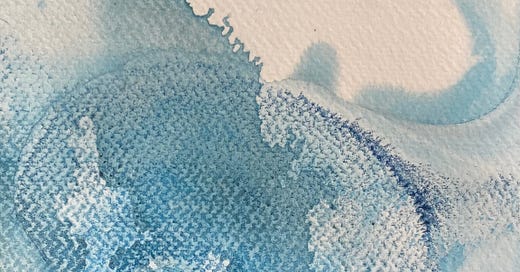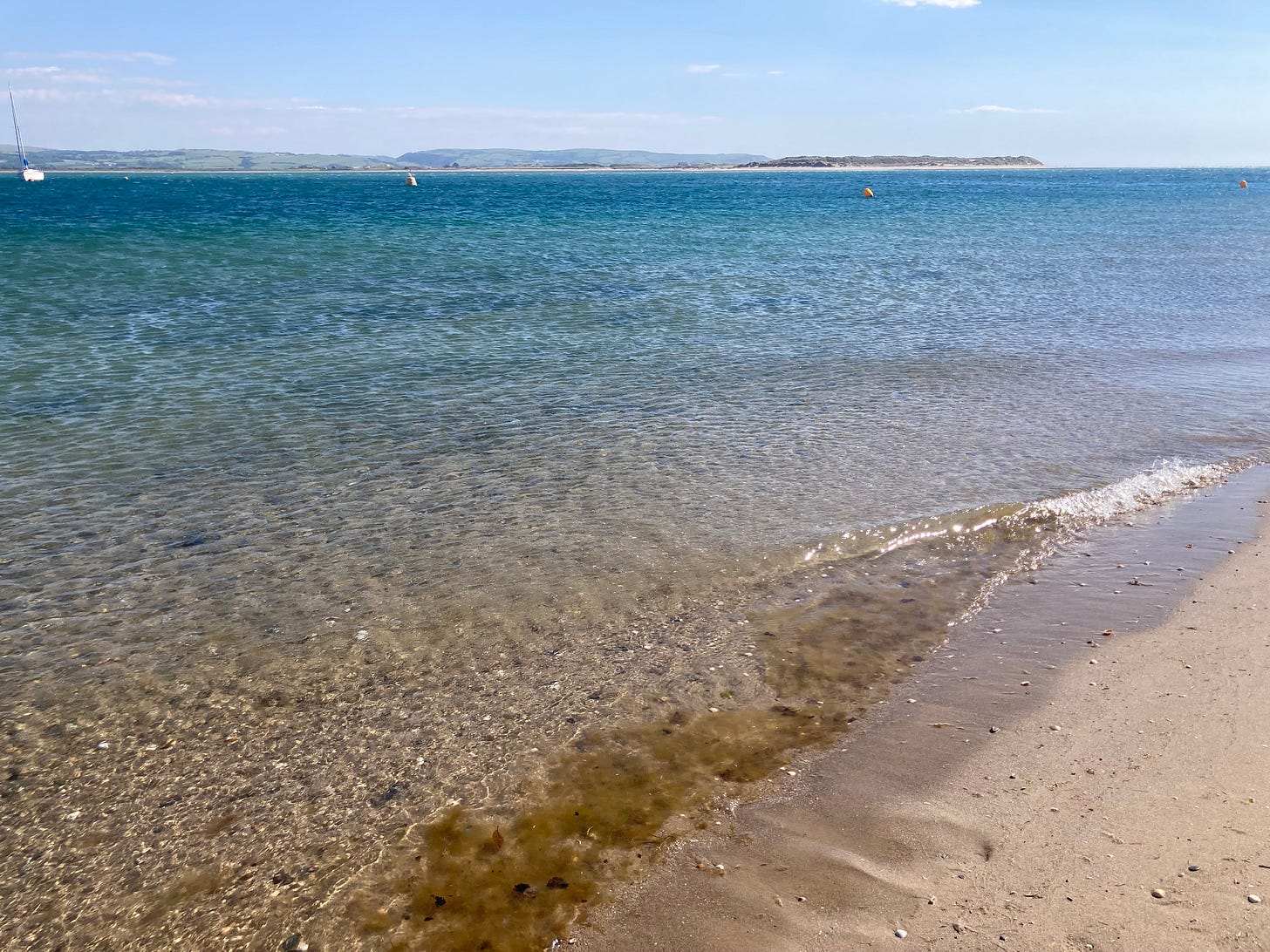Today is world oceans day. I have been to the ocean twice in the last week. I wish it was more. But twice is not nothing and both times the ocean was different. The first time, the tide was just past high, creeping away, almost unnoticeably, back to the horizon. That beach was pebbled, that beach was busy, that sun was strong. I swam in water warmed by sun and the light glittered on the cresting waves, making me squint.
The next time I went to the ocean, to a different curve of coast, the water was far out. I could still see it in the distance, the turquoise green gold line of it. I could see the breaking white waves. I could see the gulls wading, rubber legs exposed, through shallow water. I could hear it only very distantly, when the wind dropped and I stood very still to listen.
The ocean is never the same. Even, on the wonderful residency I have just returned from, where I swam every day, the water was never the same twice. And today is world ocean day and I have been thinking about stories. Stories of the sea.
Stories, the old ones, the traditional ones, the ones told many times, are shape shifters. They are things heard and misheard, things altered to suit the temperament of the teller, things with a kernel of sameness that can be completely unrecognisable from the original, while still retaining the same bones. I am thinking, today, of Sedna. Let me tell you some of her stories.
Sedna is the Goddess, the Mother, the Mistress of the sea and marine animals in the Inuit religion. Her story is one that has stayed with me since I first heard it.
Sedna is a giant, filled with a hunger so desperate she attacks her parents. Her father takes her far out to sea in his kayak, waves pushing against the wooden sides of the boat, and just as they are so far from shore that there is no hope of swimming back again, he pushes her over the edge. The shock of cold water, the grasping waves; she clings to the side of the boat, pleading, scrabbling for purchase. Her father takes his knife and cuts her fingers loose. There are many folk and fairy tales where physical disfigurement or disability is used as punishment or a signifier of evil. These outdated, unfair points of view are so widespread it is easy not to notice them, buried in the tales we love. But this story feels different; when Sedna’s fingers are cut off, they turn into seals and whales and walruses. She is not less than, she is more than. She is a creator of life. Sedna herself sinks below the surface, down, down to the seabed, where she becomes the ruler of all the monsters of the deep.
Let us start again. This time, Sedna is fatherless, motherless, alone in the world. She is abused by the villagers, cast out as strange, bullied. One day the people try to drown her, cut off her fingers, which again become seals and walruses. She lives in the sea, controlling all the mammals of the ocean. Accepted. Filled with wisdom and power.
And again - this time Sedna does not want to marry any of the men her father offers her. She watches their parading, their posturing, their vying for her as an object, and she decides there is another way. Instead of marrying one of them, she marries a dog. Her father is so angry that he throws her overboard. He cuts her fingers, again. Her fingers become the first of all the seals, the start of an entire new species. She becomes a Goddess, ruling over the ocean. When the local people want favour, when the catch has been bad and they are near starving, they send a shaman to her. He brushes her hair, tangled by the currents, and in return she releases the bounty of the ocean into their nets.
Another Sedna is beautiful, her hand in marriage competed for. Her father gives her to a hunter in exchange for fish, but the hunter is really a bird in disguise. He is a different bird in different stories; a petrel, a raven, a fulmar. He takes her to his nest, and the only way her father can save her is to take her out in his boat, to throw her into the raging ocean, to cut free her fingers when she clings. To turn her digits into seals.
There are more stories. In one she is held captive on an ice flow, is rescued by her father while the bird creature who captured her is away. But when the creature notices her missing, it turns the sea into a wild, wave filled place, and her father loses his focus on saving her, throws her over board to save himself. In another story, she is simply out for a boat ride with her family when the waves turn rough and, blaming her, they throw her over board.
There is always a woman, clinging to the edge of a boat. There is always the cutting of her clinging fingers. She always falls, down to the bottom. But she does not end here. She has appealed for help and mercy; she has received none. She has lived on anyway, she has become something new. She has found power in the deep. She has become a goddess, a monster, a ruler. Her severed digits have created new life. She is not less than, she is more than.
The story is different every time. The sea is different every time. Go, look for yourself. Think of Sedna’s fingers, floating through the wildest waves, sleek and swimming effortlessly, at home in the deep.
Enjoy World Oceans Day, and spare a thought for all the stories, through all the years, that have been told about the sea.
Wild Quiet Folk is currently 95 Rising on Substack’s leader board! If you can support my work with a subscription, it would mean the world. Alternatively, if you have enjoyed this piece, consider sending me a small tip on Ko-Fi.










